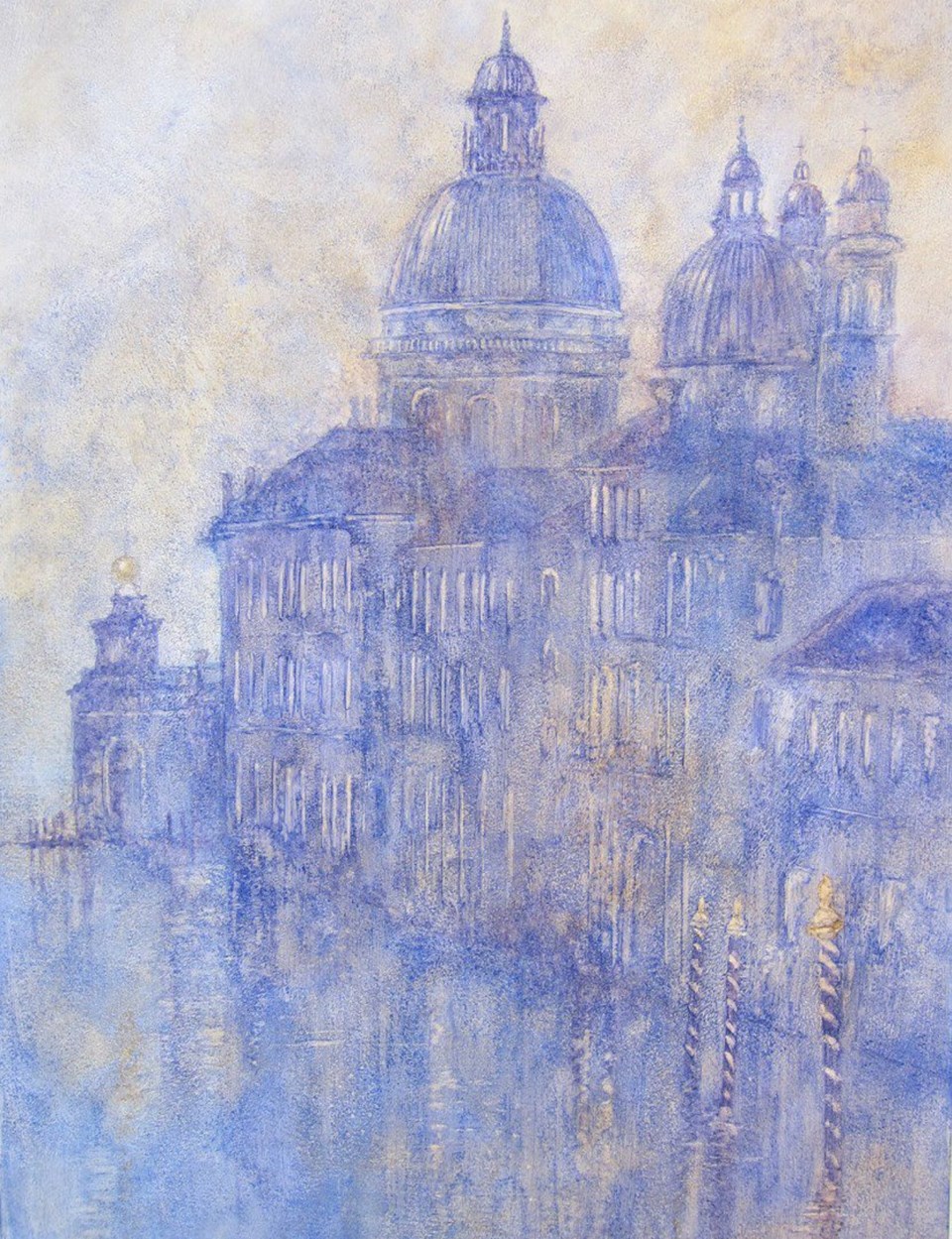The watercolours of Deirdre Roberts, now on show at the Winchester Gallery on Broad Street, maintain a connection with the past. In conversation, Roberts freely admits her admiration for the great British painter J. M. W. Turner, and for Canadian artists of a century ago including F. M. Bell-Smith and Charles John Collings. Yet on examination, her technique is unique, something she has evolved on her own.
Roberts grew up in North Wales and attributes her love of architectural detail — which is usually the focus of her paintings — to her great-grandfather and grandfather, both of whom were builders, and to her father, who was an architect. She spoke fondly of her father’s desk, with its set squares and dividers, his pencils and fine paper. He was her first teacher, and since then she has been basically self-taught.
Her paintings are small in scale and almost monochromatic. “Quiet mystery is the mood to which I am always drawn,” she has written. Over the years in which I have followed her work, I have noticed a deepening sophistication and recently I examined the surface of her pictures and was mystified by her process. How does she do it?
Roberts spends almost as much time taking paint off the paper as she does putting it on, and this approach requires a hard surface — “there’s only so much abuse the paper can take,” she said, laughing. In the beginning she worked with a plate-finish Bristol board but found that, though it was durable, its smoothness didn’t allow for the graduation of tone that she requires. Yet the usual textured paper, which accepts the granulation of pigment resulting is gentle tonal washes, is not what she wanted. One night, as she lay awake “painting pictures in her mind,” she thought of coating the paper with gesso, the usual ground for oil painting. In the light of day she applied a very thin coat of gesso, and she was able to create a surface with enough “tooth” to hold the paint and a surface sturdy enough to withstand her treatment.
Even on close inspection it’s hard to recognize her paintings as watercolours. Rather than dispersing the pigment in floods of water, she uses a dry brush technique and “scumbles” the colour into place. At first she essentially tints the entire surface with a range of very similar colours — for example, turquoise, ultramarine and violet — in a close tonal range. This opalescent ground in a middle tone allows her then to work both darker and lighter, at first drawing in colour with her brush and then “lifting” off the colour.
Roberts begins with a detailed drawing on a separate sheet of paper, but doesn’t draw out her subject on the final page. She starts the painting with that mid-tone ground. At this point she draws in her images freehand with a brush. Later, working into these darker passages, she can “lift” out the highlights with a wet brush. The result is as precise or as ethereal as she desires. Her small paintings are a result of hours and hours of work with the brush.
Reliving inspiring moments from her wanderings is always a pleasure for Roberts. In the current exhibit you’ll find paintings of London, which she visited first as a child. “Going down to London was like going to Wonderland,” she recalled. She has painted details of Hagia Sophia in Istanbul, a building dating to 537 AD which was first a church, then a mosque and is now a museum.
Venice is another stop on her travels. When she first went there 15 years ago, she felt she couldn’t possibly paint it. “I was like a deer in the headlights,” she said — stopped in her tracks by the atmosphere of that city, everywhere resplendent with the architectural detail which she finds so attractive.
The show also includes paintings inspired by the ornamental façade of the Temple Building on Fort Street and the domes of Victoria’s legislature. Roberts found “the echoes and motifs repeating, cascading domes talking to one another.” She has a repertoire of “zillions of photographs” to work from, documenting subjects as exotic as temples in Beijing and as common as cherry trees on Arbutus Road.
What she does with the images is something else again. The title of this show describes her work perfectly — Quiet Mystery: Near and Far.
Deirdre Roberts — Quiet Mystery: Near and Far, at Winchester Galleries Humboldt Valley, 796 Humboldt St., 250-382-7750, until Oct. 12. winchestergalleriesltd.com
